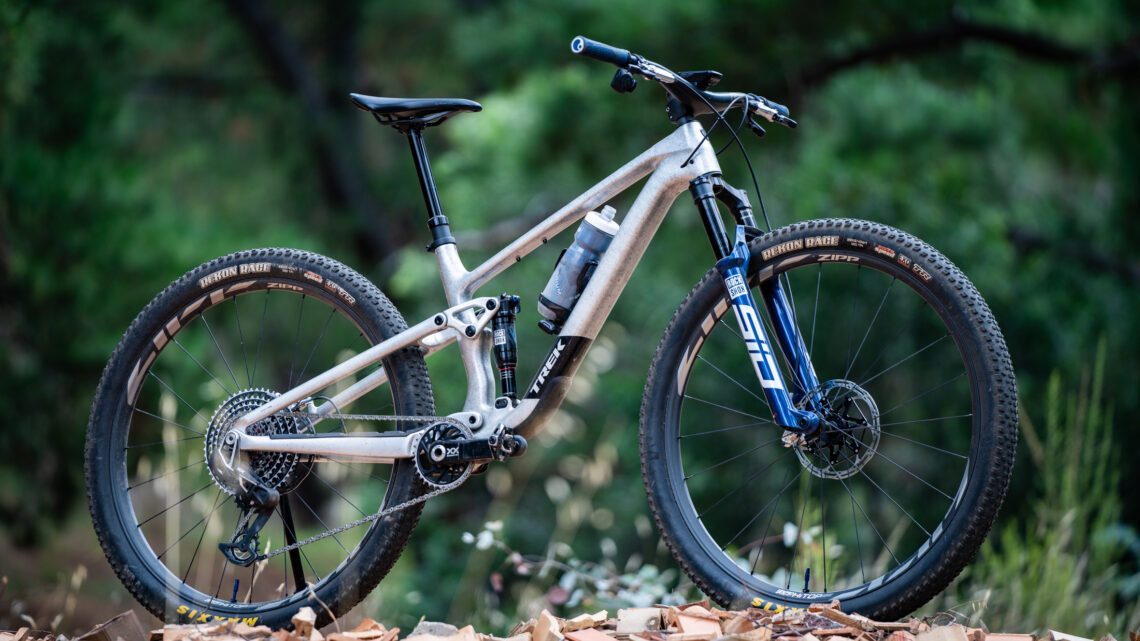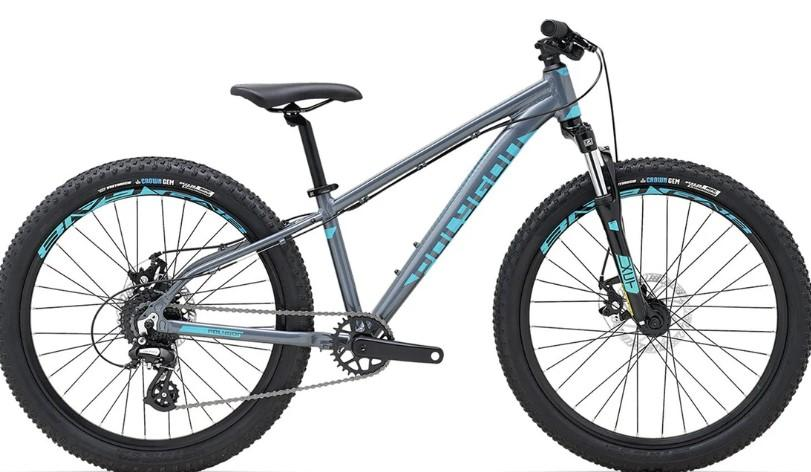
Best XC Mountain Bikes for Speed and Endurance (2025 Edition)
Cross-country (XC) mountain biking represents the perfect balance of speed, endurance, and technical skill. Having the right XC mountain bike is essential for those looking to conquer challenging trails while maintaining an impressive pace.
The 2025 market offers remarkable advancements in lightweight frame technology, responsive suspension systems, and efficient drivetrains that have elevated the XC riding experience to new heights.
Trending Now!!:
Whether you’re a competitive racer looking to shave seconds off your time or an enthusiast seeking to push your limits on technical singletrack, this comprehensive guide will help you find the perfect XC mountain bike for your needs.
We’ve tested and analyzed the top models of 2025 to bring you the definitive list of cross-country machines that deliver exceptional performance.
What Makes a Great XC Mountain Bike?
Before diving into our top picks, let’s understand the key features that define an excellent cross-country mountain bike:
Lightweight Frame
XC bikes prioritize weight reduction to enhance climbing efficiency and overall speed. Modern frames utilize advanced carbon fiber layups or lightweight aluminum alloys to minimize weight while maintaining structural integrity. The best XC frames typically weigh between 900-1200g, providing an excellent foundation for a race-ready build.
Efficient Suspension
Cross-country suspension systems are designed to absorb trail chatter while remaining firm during pedaling efforts. Most competitive XC bikes feature:
- Travel Range: Typically 100-120mm front suspension, with many models offering 100mm rear suspension
- Lockout Capability: Remote lockouts for immediate suspension firming during climbs
- Tuning Options: Adjustable compression and rebound settings for personalized performance
Responsive Geometry
The geometry of XC bikes has evolved significantly in recent years. Modern XC geometry features:
- Head Tube Angle: Between 67-69 degrees, balancing stability and quick handling
- Reach: Longer reach measurements for improved stability at speed
- Seat Tube Angle: Steeper angles (74-76 degrees) for efficient power transfer while climbing
- Chainstay Length: Short to medium chainstays for nimble handling and climbing traction
Efficient Drivetrain
XC bikes typically feature wide-range 1x drivetrains that offer sufficient gearing for steep climbs while eliminating the complexity of front derailleurs. Key drivetrain considerations include:
- Gear Range: Wide-range cassettes (typically 10-52T or 10-50T)
- Weight: Lightweight components to reduce rotational mass
- Shifting Performance: Quick, precise shifting under load
Top XC Mountain Bikes of 2025
1. 2024 Polygon Premier 24 XC Disc EVO Lightweight Kids Bike
Price: $649.00

The Polygon Premier 24 XC Disc EVO is designed for young riders looking to develop their cross-country mountain biking skills with a lightweight, responsive platform that doesn’t compromise performance features.
Key Features:
- Lightweight ALX alloy frame designed for young riders
- SR Suntour XCR 24 Air fork with 80mm travel and lockout
- Shimano Deore 10-speed drivetrain
- Hydraulic disc brakes for reliable stopping power
- Entity XL2 double wall rims
- Weight: 11.2kg (24.7 lbs)
- Suitable for riders 135-150cm tall (approx. 8-12 years)
What We Love: The air suspension fork is a standout feature at this price point, allowing proper tuning for lighter riders. The quality Shimano Deore drivetrain provides reliable shifting performance that mimics adult-level bikes, helping young riders develop proper technique.
Considerations: While this is positioned as a premium kids’ bike, parents should consider the rapid growth of children in this age range when investing in a higher-end model.
2. 2024 Polygon Premier 24 XC Lightweight Kids Mountain Bike
Price: $449.00

This model offers an excellent entry point into XC mountain biking for younger riders, featuring a balanced combination of quality components and a kid-specific geometry that ensures comfort and confidence on the trails.
Key Features:
- ALX Lightweight Alloy Frame with trail-ready geometry
- SR Suntour XCT-JR 24 fork with 50mm travel
- Shimano Altus 9-speed drivetrain
- Mechanical disc brakes
- Entity XL2 double wall rims
- Weight: 11.0kg (24.3 lbs)
- Suitable for riders 135-150cm tall (approx. 8-12 years)
What We Love: The lightweight frame design makes handling easier for developing riders, while the 9-speed drivetrain offers sufficient gearing range for tackling varied terrain. The mechanical disc brakes provide reliable stopping power and help young riders develop proper braking techniques.
Considerations: The coil suspension fork isn’t adjustable for rider weight like the air fork on the EVO model, which may be a consideration for very light or heavier children.
3. 2024 Polygon Premier 24 XC Disc Lightweight Kids Bike
Price: $579.00

Sitting between the standard and EVO models, this Premier 24 XC Disc variant offers hydraulic disc brakes for enhanced stopping power while maintaining an approachable price point for quality youth mountain bikes.
Key Features:
- ALX Lightweight Alloy Frame optimized for young riders
- SR Suntour XCT-JR 24 fork with 50mm travel
- Shimano Altus 9-speed drivetrain
- Tektro hydraulic disc brakes
- Entity XL2 double wall rims
- Weight: 11.1kg (24.5 lbs)
- Suitable for riders 135-150cm tall (approx. 8-12 years)
What We Love: The hydraulic disc brakes are a significant upgrade that require less hand strength to operate effectively. This makes it easier for young riders to modulate their braking and build confidence on descents. The overall component package offers excellent value for developing riders.
Considerations: While the 50mm travel fork is adequate for most beginner to intermediate trails, more aggressive young riders might benefit from the additional travel the EVO model offers as they progress.
Choosing the Right XC Mountain Bike for Your Needs
Consider Your Racing Goals
If you’re focused on traditional XC racing with an emphasis on climbing efficiency and speed, bikes like the Specialized Epic Pro and Canyon Lux World Cup offer race-proven performance. The Santa Cruz Blur TR or Scott Spark RC provide additional suspension travel and stability for more technical courses or marathon events.
Frame Material Considerations
Carbon fiber dominates the high-end XC market due to its exceptional strength-to-weight ratio. However, premium aluminum frames like those found on mid-range models offer excellent performance at more accessible price points. When choosing between materials, consider your budget and riding priorities.
Suspension vs. Hardtail
Modern full-suspension XC bikes have become incredibly efficient, narrowing the traditional advantage of hardtails. Consider a full-suspension bike if you prioritize control and comfort on technical terrain. Opt for a hardtail like the Cannondale Scalpel HT if absolute climbing efficiency and simplicity are your priorities.
Component Selection
When comparing bikes at similar price points, pay close attention to the specifications of the suspension, wheels, and drivetrain. These components have the most significant impact on performance and can differentiate bikes with similar frames.
Maintenance Tips for XC Mountain Bikes
To maintain peak performance from your XC mountain bike:
- Regular Suspension Service: Follow manufacturer recommendations for service intervals, typically every 50-100 hours of riding
- Drivetrain Cleaning: Clean and lubricate your chain after muddy rides to prevent premature wear
- Tubeless Tire Maintenance: Check sealant levels every 1-2 months and replenish as needed
- Bearing Checks: Periodically inspect pivot bearings and headset for play or roughness
- Brake Maintenance: Check pad wear regularly and bleed hydraulic systems annually
Conclusion
The 2025 XC mountain bike market offers exceptional options for riders of all levels and preferences. Whether you’re competing at the highest levels or pushing your personal limits on local trails, today’s cross-country bikes deliver unprecedented performance, efficiency, and capability.
When making your final decision, consider test riding several models, if possible, to determine which geometry and suspension characteristics best match your riding style. Remember that the best bike is ultimately the one that inspires confidence and motivates you to ride more often and push your limits.
At BikesOnline, we’re committed to helping you find the perfect XC mountain bike for your specific needs. Our expert staff is available to answer questions and provide personalized recommendations to ensure you make an informed decision on this significant investment.
Related Questions
What’s the difference between an XC and trail mountain bike?
XC mountain bikes prioritize lightweight construction and pedaling efficiency, typically featuring 100-120mm of suspension travel. Trail bikes offer more suspension travel (130-150mm), more relaxed geometry, and additional features for descending capability at the expense of some climbing efficiency.
How often should I service the suspension on my XC mountain bike?
Most manufacturers recommend a basic lower leg service on forks every 50 hours of riding and a full service every 200 hours. Rear shocks typically require service every 100-200 hours, depending on riding conditions and manufacturer specifications.
Are carbon wheels worth the upgrade for XC riding?
Carbon wheels offer noticeable performance benefits for XC riding, including reduced weight for faster acceleration, improved stiffness for precise handling, and often better impact resistance. However, the high cost means they represent a significant investment that should be considered after optimizing other aspects of your bike and fitness.
What tire pressure should I run for XC mountain biking?
Optimal tire pressure depends on rider weight, tire width, riding conditions, and personal preference. Most XC riders run between 20-28 PSI, with heavier riders and narrower tires requiring higher pressures. Experiment with small adjustments (1-2 PSI) to find your ideal setup for specific trail conditions.
How do I know what size XC mountain bike I need?
Most manufacturers provide size guides based on height, but factors like torso length, arm length, and flexibility can influence ideal sizing. When possible, test ride multiple sizes to determine which offers the best balance of comfort and handling for your body proportions and riding style.

